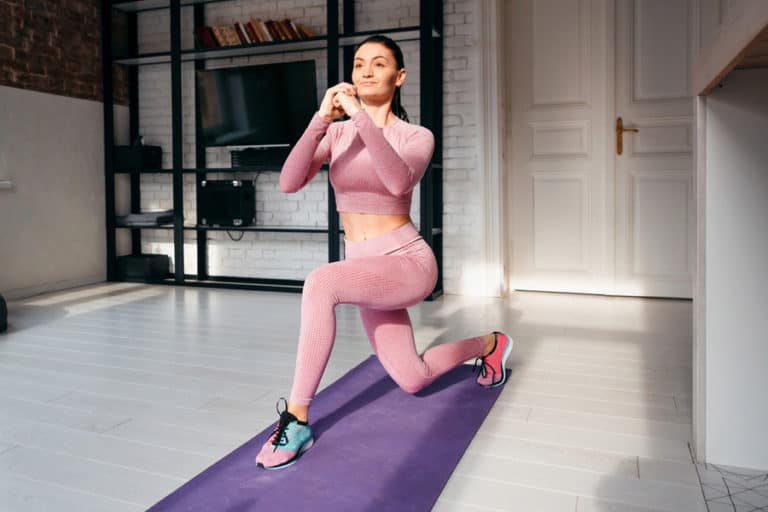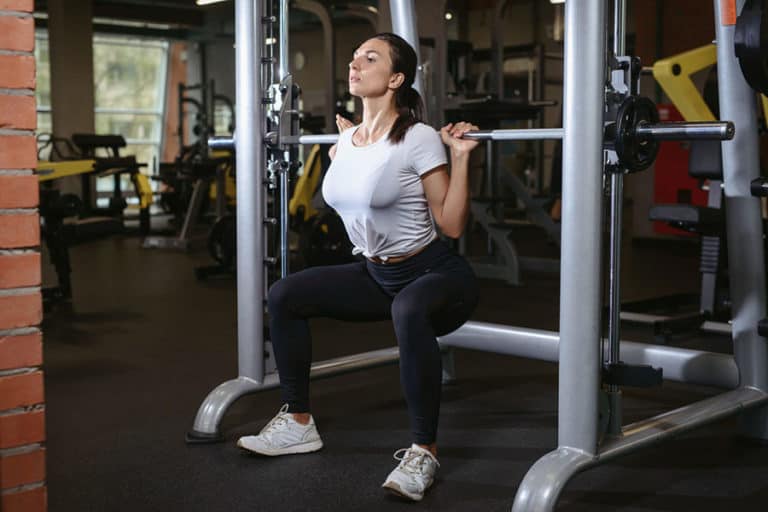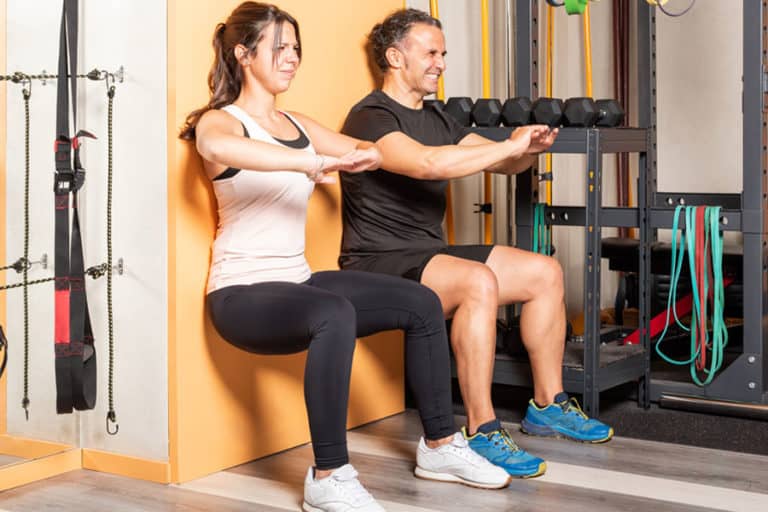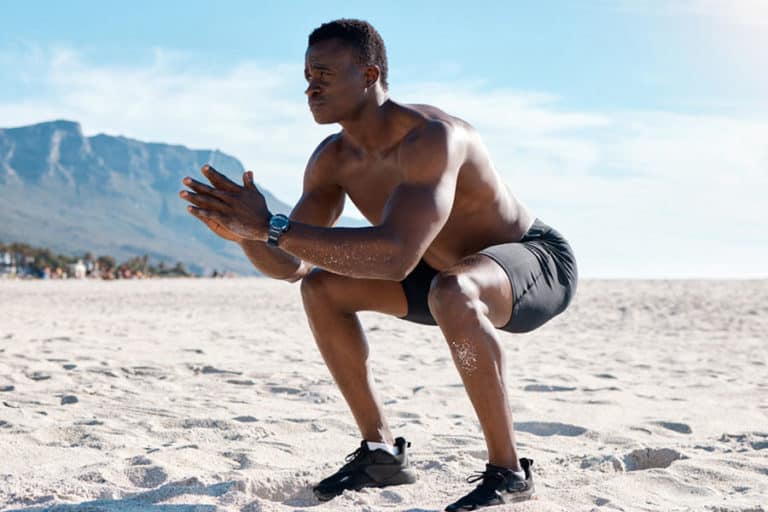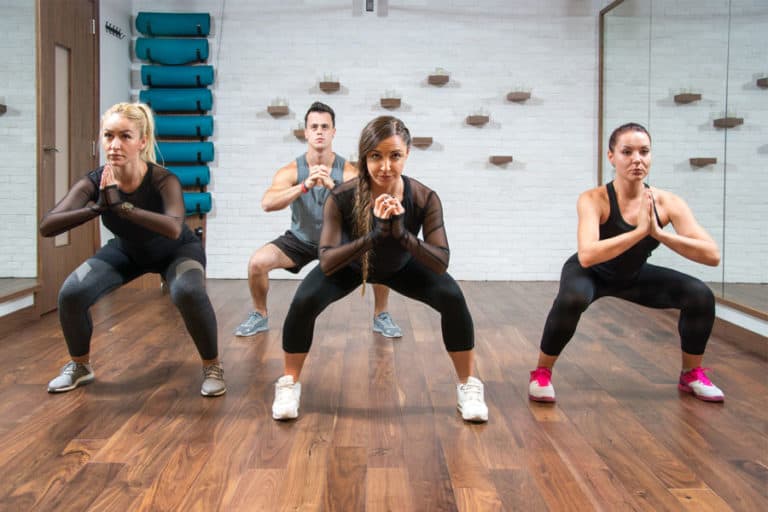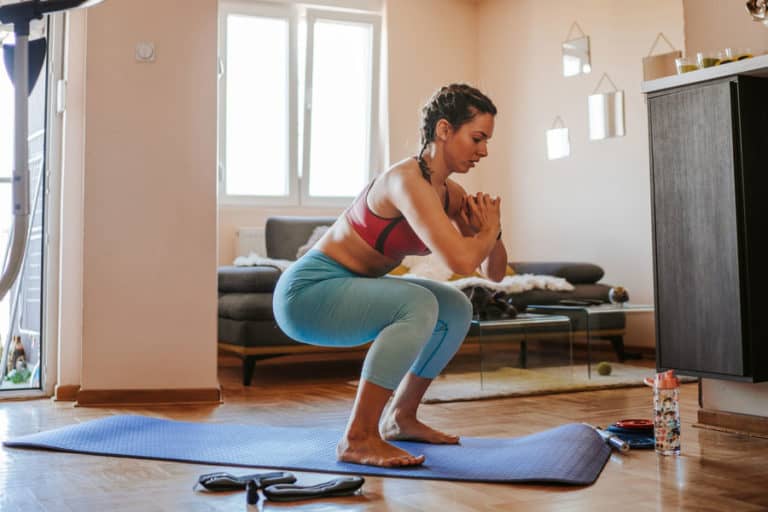How To Stretch Glutes: 7 Simple And Effective Exercises
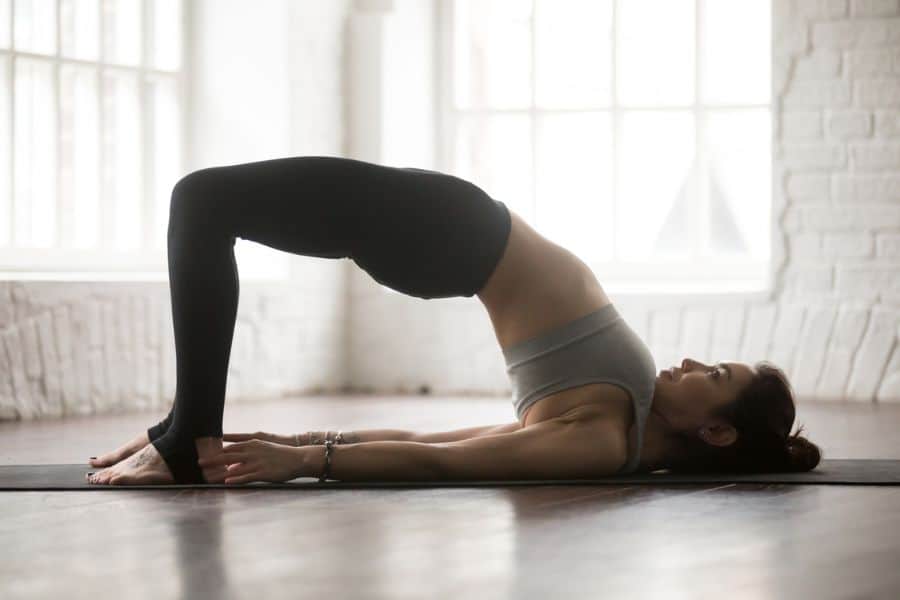
glute stretches | Benefits | Causes | Symptoms | Exercise routine
The glutes are one of the largest and strongest muscle groups in the body, and they play a crucial role in daily activities.
Unfortunately, many people neglect the importance of stretching them to maintain their overall muscle health. However, gluteal stretches are essential to improve muscle health, relieve tightness and pain, and reduce the risk of injury.
Thus, we have put together 7 glute stretches to help you reap the many benefits of stretching your glutes.
7 easy glute stretches
While some people want to stretch their glute muscles before a workout, some may need to stretch their glutes to relax after a long day of physical activity.
Regardless, the following 7 glute stretches can help improve your overall muscle health and performance:
1. Glute bridge
Target muscles: Glutes, hip flexors, quads
How to do:
- Start by lying on your back on the floor.
- Bend both knees, making sure to keep your feet flat on the ground.
- Cross your arms over your chest or place them by your sides.
- Tilt your pelvis up towards the ceiling and flatten your lower back against the floor.
- Press your heels into the floor to engage your glutes.
- Lift your hips upward while maintaining the tension in your glutes.
- Lower your hips back down to the floor.
- Repeat the motion for 2 to 5 reps.
Summary: The glute bridge targets all three gluteal muscles, particularly emphasizing the Gluteus Maximus. It can be used as a warm-up exercise before a workout or to activate the glutes after extended periods of sitting.
2. Pigeon pose
Target muscles: back, glutes, groin, hip flexors
How to do:
- Begin on your hands and knees in an all-fours position.
- Move your right knee toward your right wrist, and place your shin on the floor.
- Slide your right ankle toward your left wrist.
- Extend your left leg back, pointing your toes, and keep your hips facing forward. Lengthen your spine.
- Slowly walk your hands forward, maintaining a straight spine.
- Hold this position for 10-30 seconds.
- Return to the starting position and switch legs.
- Repeat the same steps on the other side.
Summary: The pigeon pose helps to release tension in the glute muscles, hips, and lower back. You might feel a deeper stretch in your glutes as your upper body lowers to the floor.
3. Standing figure four stretch
Target muscles: Hips and glutes
How to do:
- Start by standing up straight without any curves in your spine.
- Cross your left ankle over your right thigh, positioning it just above your knee to create a shape similar to figure four (4).
- While standing on one leg, slowly bend your right knee to lower yourself into a squatting position.
- Hold the position for 20 to 30 seconds while feeling the stretch in your left glute.
- Gradually release the position, straighten your body upright, and place your left foot back on the floor.
- Repeat the same steps with your right leg.
Summary: The standing figure-four stretch is an effective way to target tightness in the glutes, hips, and back. While it requires balance and can be challenging, using a wall or chair for support can make the exercise easier and more convenient.
4. Seated figure four stretch
Target muscles: Glutes and hips
How to do:
- Sit straight on a chair and bend your knees so they are at a 90° angle.
- Make sure your feet are flat on the ground.
- Lift your left foot up and place it on your right thigh, letting your left knee relax to the side.
- Put your left hand on your left knee and your right hand on your left shin.
- Move your upper body forward slowly, making sure to keep your back straight.
- When you feel a stretch, stop moving and hold the position for 10-30 seconds
- Put your left foot back on the ground and repeat the same steps with your right foot on your left thigh.
Summary: The seated figure-four stretch effectively targets tightness in the glutes, hips, and back. Although maintaining balance can be difficult, utilizing a chair for support during exercise can enhance the convenience and ease of the exercise.
5. Seated twist
Target muscles: Back glutes, outer hips, Abs, shoulders, and neck
How to do:
- Sit on the exercise mat with both legs stretched out in front of you.
- Bend your left leg at the knee and bring it towards your chest, keeping your right leg straight on the floor.
- Cross your left foot over your right leg.
- Place your left arm on the floor behind you, with your fingers pointing away from your body.
- Twist your body towards your left hand, and place your right hand on your left knee, keeping your fingers pointing outwards.
- Gently pull your left knee towards your right side to deepen the stretch.
- Hold the stretch for up to 10-20 seconds.
- Release the pose and repeat on the other side.
Summary: The seated twist stretch is a great way to increase mobility in the glutes and help you relax after an intense workout. This exercise helps improve your posture and reduce tension in the lower back, hips, abs, and shoulders.
6. Downward-facing dog
Target muscles: Glutes, hamstrings, calves, and upper body muscles.
How to do:
- Start in a plank position with your hands shoulder-width apart and your shoulders directly above your wrists.
- Press your palms firmly into the floor, tuck your toes under, and lift your hips up and back.
- Straighten your arms and legs as much as you can, but don’t lock your knees or elbows.
- Your body should form an upside-down “V” shape, with your hips reaching up toward the ceiling and your heels pressing toward the floor.
- Relax your neck and let your head hang naturally.
- Keep your gaze between your knees or toward your belly button.
- If you’re comfortable, hold the pose for 5-10 seconds or longer.
- Lower your knees to the floor and return to the starting position.
Summary: This is a traditional yoga posture that is known for its ability to stretch and loosen multiple muscles, including the legs, glutes, and upper body, while also strengthening the arms. This pose can be done alone or with a partner as a two-person yoga pose.
7. 90-90
Target muscles: Glutes, psoas, hip flexors, adductors
How to do:
- Start by sitting on the floor with your legs in front of you.
- Bend your right knee at a 90-degree angle so that your shin becomes parallel to your hip.
- Bend your left knee 90 degrees by turning your leg to the left side, making sure your knee is in line with your hip.
- To maintain balance, gently press your fingertips into the floor while sitting tall and flexing both feet.
- Hold the stretch for 20-30 seconds, breathing deeply and relaxing your body.
- Release the stretch by slowly sitting back up and extending both legs in front of you.
- Repeat on the other side.
Summary: The 90-90 stretch is a yoga posture that is beneficial for stretching the hips, glutes, and thighs. It’s important to avoid overexertion during the stretch and to pay attention to your body’s response. If you experience any pain or discomfort, it’s advisable to reduce the intensity of the stretch.
Benefits of stretching glutes
When you stretch tight glutes, you may experience various benefits that can help relieve discomfort and enhance your overall physical performance. Here are some of the main benefits associated with stretching your glutes:
- Relieves low back, buttocks, and pelvic pain
- Reduces tightness in hips and hamstrings
- Enhances flexibility and range of motion [1]Harvard Health Publishing: The 4 most important types of exercise
- Reduces risk of injury [2]PubMed: Acute effects of muscle stretching on physical performance, range of motion, and injury incidence in healthy active individuals: a systematic review
- Improves overall mobility
Note: When it comes to tight glutes, the muscles in the surrounding area can also be tight. Therefore, it’s important to stretch and strengthen hip flexors, quads, lower back muscles, and hamstrings.
Causes of tight glutes
Here are some common causes of tight glutes:
- Poor posture
- Muscle imbalances
- Injuries
- Aging
- Overuse or repetitive, repetitive movements
- A sedentary lifestyle that includes too much sitting and a lack of stretching
Symptoms of tight glutes
Here are some signs that could indicate tight glutes:
- Pelvic pain
- Soreness in the gluteal region
- Tight hip flexors and hamstrings
- Knee or hip pain and soreness
- Lower back pain
How often should you do glute stretches?
You can stretch your glutes every day before warmup or post-workout, but stretching them at least 3-4 times a week is recommended to prevent stiffness and tightness.
Additionally, incorporating upper glute exercises and strength training workouts, such as squats for glutes, can help to maintain strong and flexible glutes.
Adding glute stretches to your Exercise routine
Here are two sample circuits to incorporate glute stretches into your exercise program, one for beginners and the other for intermediate to advanced-level fitness enthusiasts.
All the exercises below help to stretch and strengthen the glutes:
Beginner level
| Beginner level exercises | Reps |
| Glute bridge | 3 reps |
| Air squats | 5 reps |
| Mountain climbers | 8 reps |
| Jump squats | 10 reps |
| Seated figure four stretch | 5 reps |
Intermediate/Advanced level
| Intermediate/Advanced level exercises | Reps |
| Seated twist | 12-15 reps |
| Back squat | 12-15 reps |
| Sumo squat | 12-15 reps |
| Kettlebell swings | 12-15 reps |
| Pigeon pose | 3-5 reps |
Conclusion
Stretching your glutes can alleviate tightness and pain in the lower back, hips, hamstrings, and glutes and improve flexibility and range of motion. However, if you have had surgery or injury or have pain in your lower body, it is important to consult with a doctor before attempting glute stretches.
References
| ↑1 | Harvard Health Publishing: The 4 most important types of exercise |
|---|---|
| ↑2 | PubMed: Acute effects of muscle stretching on physical performance, range of motion, and injury incidence in healthy active individuals: a systematic review |


